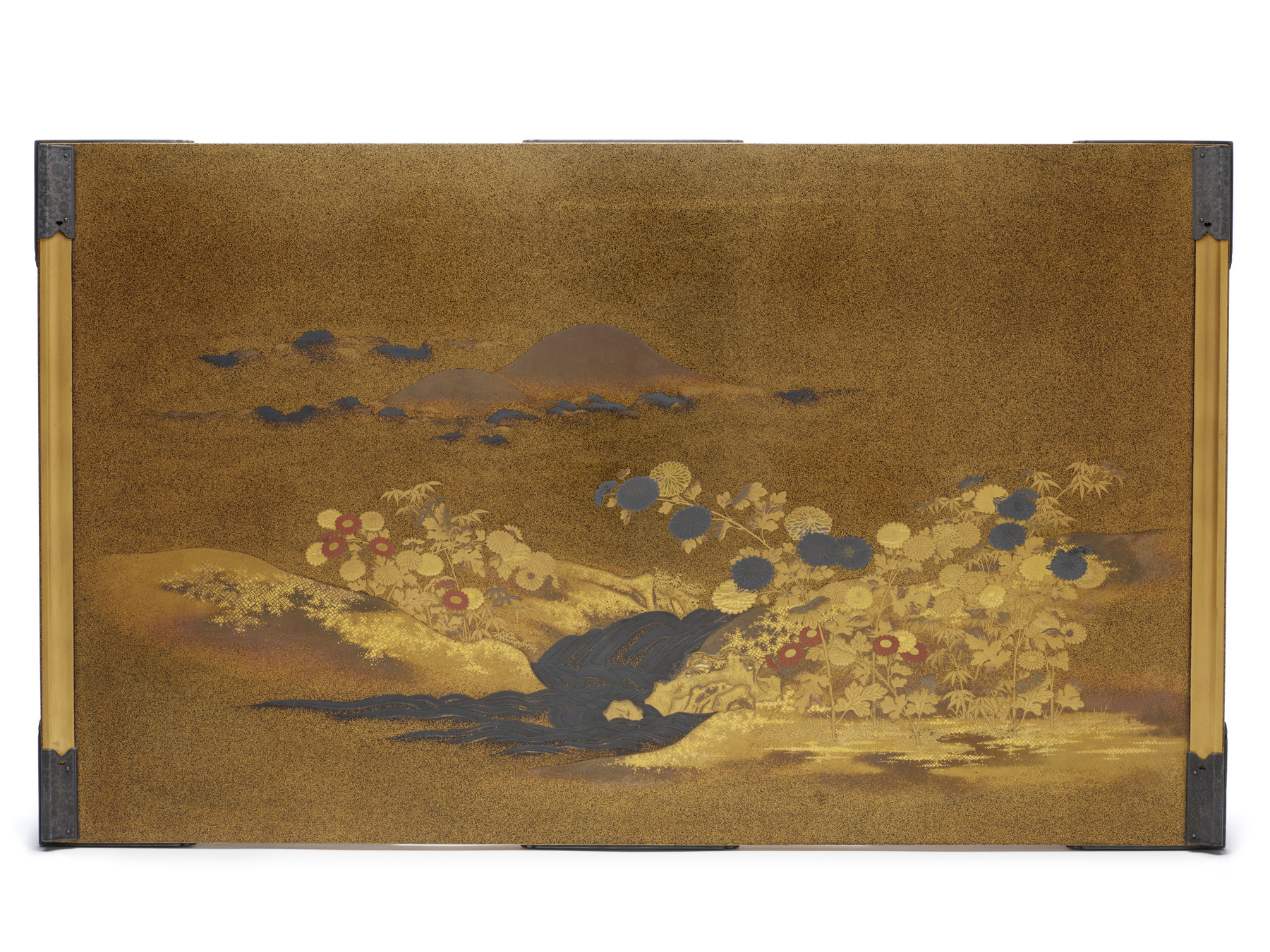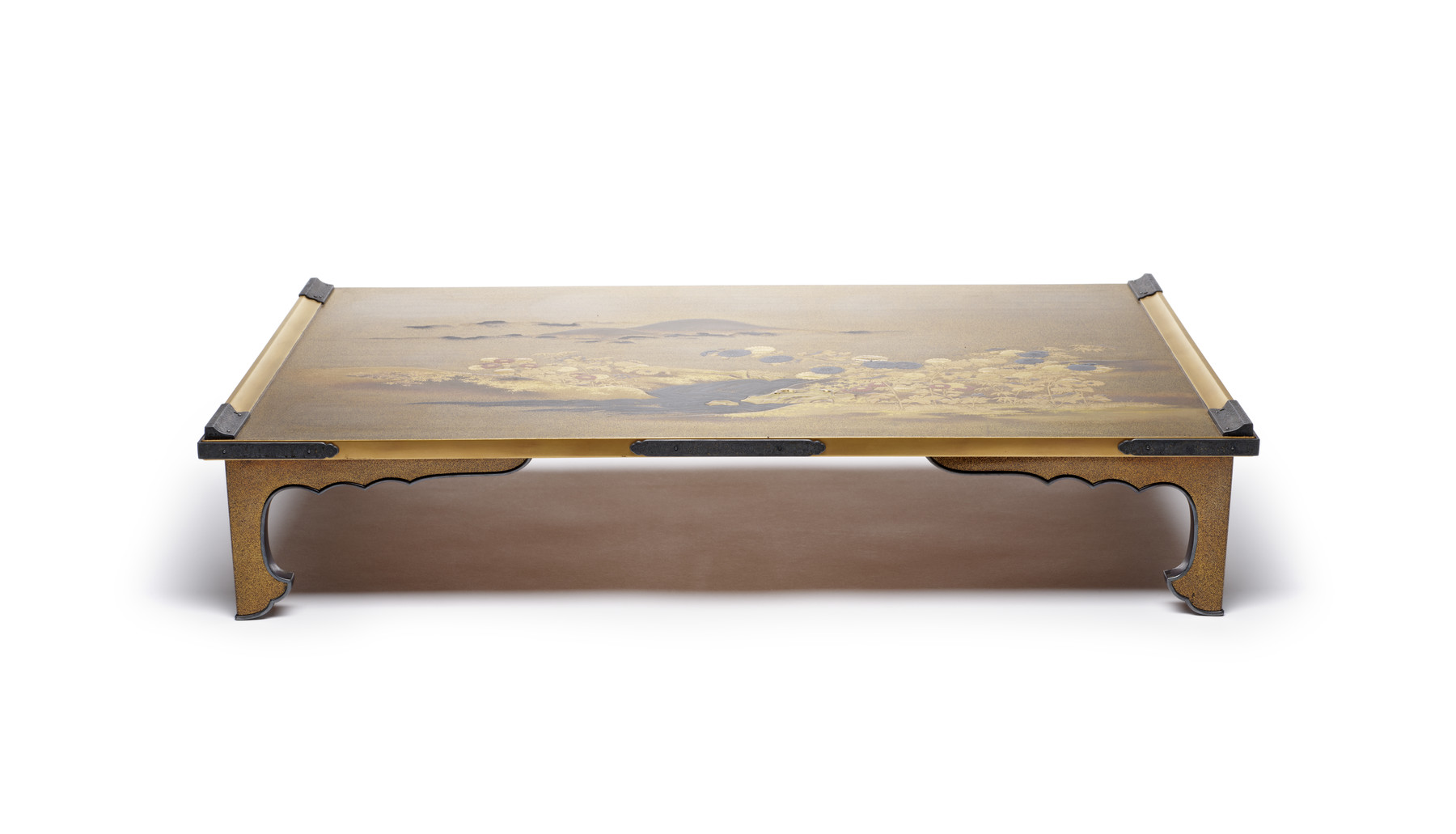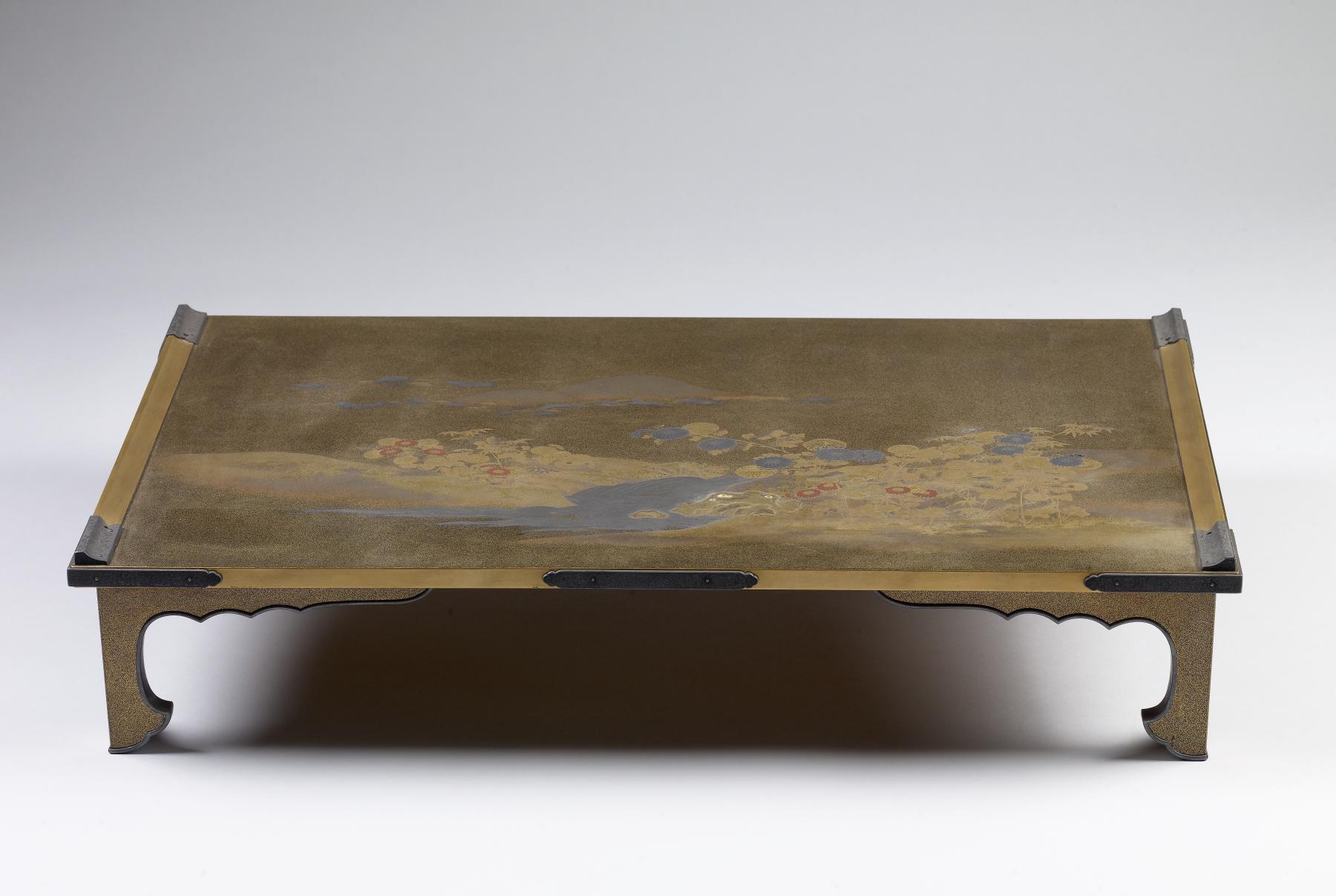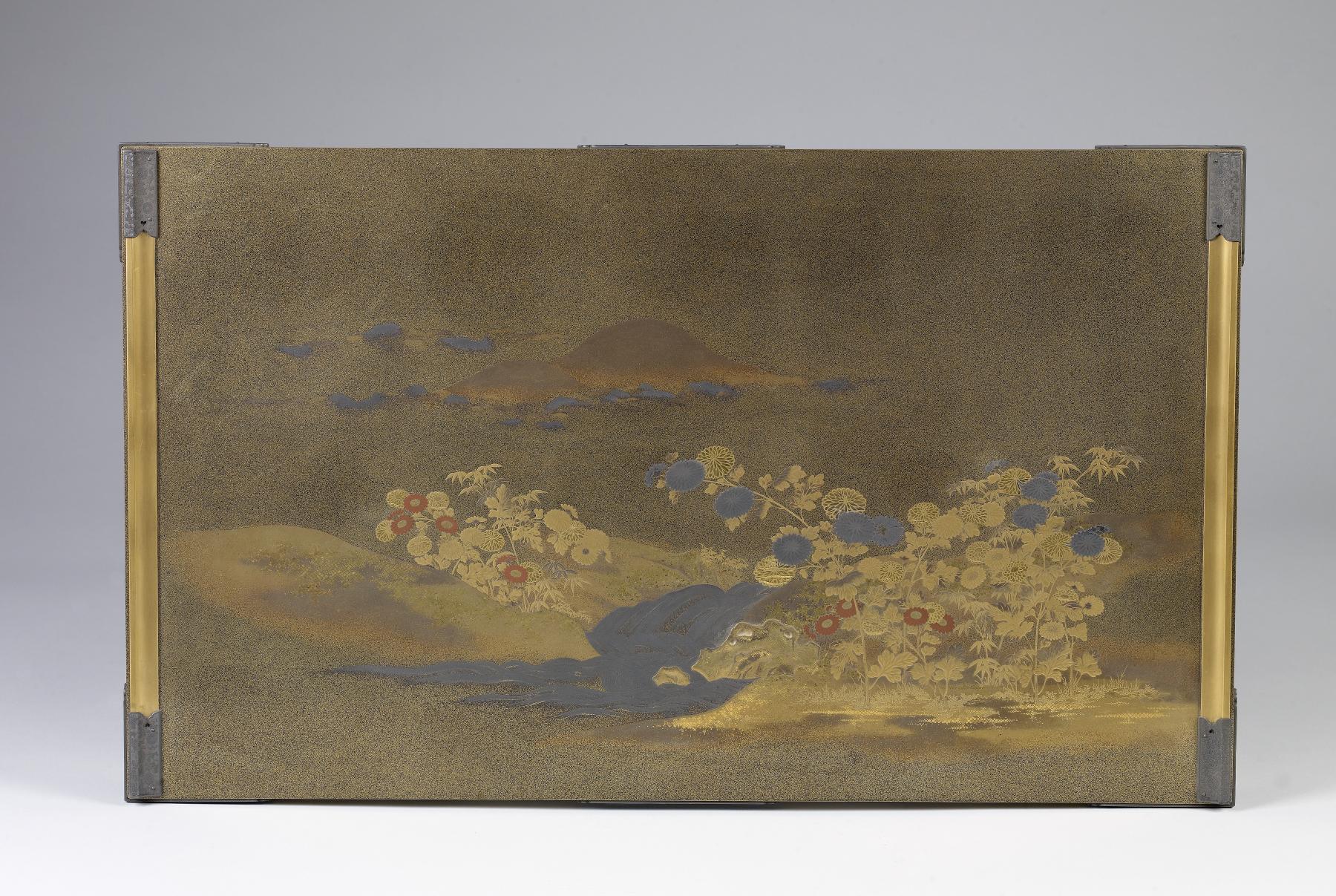Writing Table (Bundai) with a Brook and Flowers
A scholar or calligrapher would arrange their writing tools on this writing table (bundai). The table surface is decorated with a golden mountain landscape scene with a brook and flowers. The bunches of flowers that dominate the foreground and flank the stream are chrysanthemums. This imagery in Japan is an ancient and common reference to the legend of Kikujidō, Chrysanthemum Boy, who was the subject of a well-known Chinese tale that became the subject of a Japanese Nō play. Chrysanthemum Boy is famed for unknowingly drinking an elixir of immorality from a dewy chrysanthemum leaf on which he had previously written some Buddhist text and then thrown into the nearby stream.
The artist built up the landscape scene using maki-e, a technique in which different sizes and shapes of gold leaf and different colors of gold powder are sprinkled on wet lacquer.
Inscription
Provenance
Provenance (from the French provenir, 'to come from/forth') is the chronology of the ownership, custody, or location of a historical object. Learn more about provenance at the Walters.
Minoda Chojiro, Centennial Exhibition, Philadelphia, 1876 (?); William T. Walters, Baltimore, 1876, by purchase; Henry Walters, Baltimore, 1894, by inheritance; Walters Art Museum, 1931, by bequest.
Exhibitions
| 2011 | The Art of Writing Instruments from Paris to Persia. |
| 1876 | Centennial Exhibition Philadelphia. Memorial Hall, Philadelphia, Philadelphia. |
Geographies
Japan (Place of Origin)
Measurements
H: 3 1/2 x W: 22 1/8 x L: 12 5/8 in. (8.89 x 56.2 x 32.07 cm)
Credit Line
Acquired by William T. Walters, 1876 (?)
Accession Number
In libraries, galleries, museums, and archives, an accession number is a unique identifier assigned to each object in the collection.
In libraries, galleries, museums, and archives, an accession number is a unique identifier assigned to each object in the collection.
67.340










